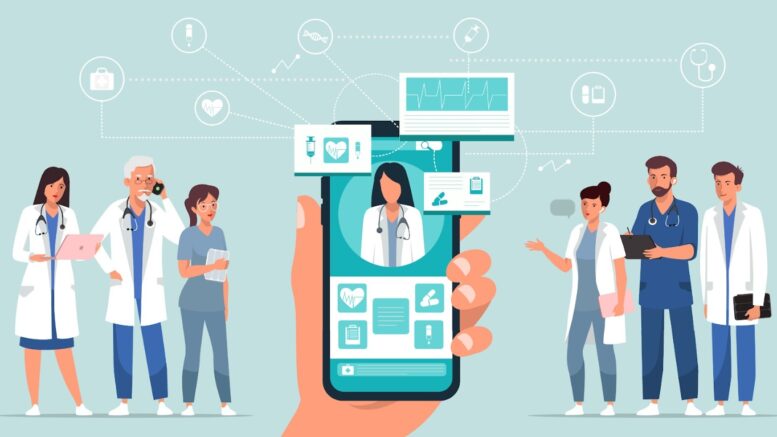In the evolving landscape of healthcare, technology continues to reshape the delivery of critical care services. Among the innovative approaches gaining prominence is tele-ICU, a remote monitoring system that enables healthcare providers to deliver intensive care expertise to patients in distant locations. Let’s explore how tele-ICU services are delivered and the benefits they offer.
Remote Monitoring and Communication
At the heart of tele-ICU services is real-time remote monitoring and communication. Advanced cameras, sensors, and monitoring devices are installed in the ICU rooms, continuously transmitting vital signs, patient data, and even video feeds of patients to a remote team of critical care specialists. This allows for constant vigilance over patient conditions, even if the specialists are miles away.
24/7 Surveillance
Tele-ICU services provide round-the-clock surveillance, ensuring that patients receive immediate attention and intervention when needed. The remote team can quickly detect changes in vital signs or alarming trends, allowing for timely adjustments to treatment plans or interventions to prevent complications.
Expert Consultations
One of the key advantages of tele-ICU is access to expert consultations regardless of geographical barriers. Critical care specialists can remotely review patient data, collaborate with on-site healthcare teams, and provide recommendations or guidance in real-time. This expertise enhances the quality of care delivered to patients, particularly in facilities with limited access to intensive care specialists.
Mobile Applications
Some tele-ICU services offer mobile applications, allowing healthcare providers to access real-time patient data, receive alerts, and consult with remote specialists from their smartphones or tablets. This portable solution enhances flexibility and accessibility, enabling timely interventions regardless of location.
Data Analytics and Predictive Modeling
Tele-ICU services leverage advanced data analytics and predictive modeling algorithms to identify patterns, trends, and potential risks in patient data. By analyzing large datasets, these systems can predict deteriorations in patient condition before they occur, enabling proactive interventions and reducing the risk of adverse events.
Education and Training
Tele-ICU platforms also serve as valuable educational tools, providing opportunities for knowledge sharing and training among healthcare professionals. Remote specialists can conduct virtual training sessions, case reviews, and skill-building exercises with on-site staff, fostering continuous learning and professional development.
Cost-Effectiveness
Beyond improving patient outcomes, tele-ICU services offer significant cost-saving benefits. By remotely monitoring multiple patients from a centralized location, healthcare facilities can optimize resource utilization, reduce the need for unnecessary transfers or readmissions, and minimize staffing requirements during off-peak hours.
Enhanced Access to Care
For patients in rural or underserved areas, tele-ICU services can bridge the gap in access to critical care expertise. By connecting these patients with remote specialists, tele-ICU helps ensure that they receive timely and high-quality care, improving their chances of recovery and survival.
Improved Outcomes
Numerous studies have demonstrated the positive impact of tele-ICU services on patient outcomes. By facilitating early intervention, reducing medical errors, and optimizing treatment protocols, Tele-ICU has been associated with lower mortality rates, shorter ICU stays, and decreased complications for critically ill patients.
Conclusion
Tele-ICU services represent a transformative approach to critical care delivery, harnessing the power of technology to overcome geographical barriers and enhance patient outcomes. By enabling remote monitoring, expert consultations, data analytics, and education, tele-ICU services empower healthcare providers to deliver high-quality intensive care to patients wherever they may be. As technology continues to advance, tele-ICU is poised to play an increasingly vital role in the future of critical care medicine.
Article edited and fact checked by our editorial team.
References:
- Kemp Van Ee S, McKelvey H, et al. Telemedicine Intensive Care Unit (Tele-ICU) Implementation During COVID-19: A Scoping Review. Cureus. 2022 May 19;14(5):e25133. doi: 10.7759/cureus.25133.
- Characteristics of U.S. acute care hospitals that have implemented telemedicine critical care. Ofoma UR, Maddox TM, Perera C, et al. Crit Care Explor. 2021;3:0. – PMC
- Guinemer C, Boeker M, Fürstenau D, Poncette AS, Weiss B, Mörgeli R, Balzer F. Telemedicine in Intensive Care Units: Scoping Review. J Med Internet Res. 2021 Nov 3;23(11):e32264. doi: 10.2196/32264.
